Key Points
- Choice, variation, and social food sharing are all significant reasons why charcuterie and charcuterie board have become popular.
- Traditional charcuterie often uses techniques to prepare cured meats, sausage, pates, rillettes, and confit.
Classical French charcuterie is a mixture of cured meats highlighting preservation or flavor enhancement. Based often on meat. Modern charcuterie has a broad definition covering many types of platters with meat, non-meat, sweet treats, and condiments. The contemporary interpretation has been morphed by many content providers and commercial operators.
I’ve studied, created, researched, and worked around charcuterie for several decades.
The history and origin of cured meat are fascinating, and they have morphed into something quite extraordinary in this modern era.
You could say it’s popular because it hasn’t received much marketing or exposure until the 2000s. The actual word does sound very high-end and fancy; it’s been used in restaurants to
Charcuterie said “shaa·koo·tuh·ree” sounds so fancy! Here is a quick lesson!
There is a traditional and modern interpretation, which I will go through later also.
Dry-cured meats from many cultures underpins the popularity of charcuterie; the traditional Norcini (Italy cured meat craft butcher) is pictured below:
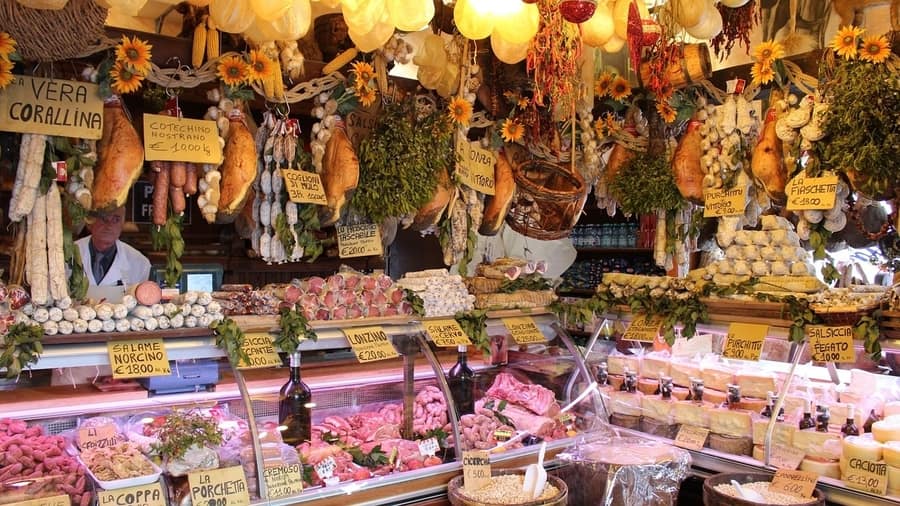
I’m not particularly eager to pigeonhole the ideas around charcuterie. I used to think it only related to cured meats, but the melding of cultures and flavors worldwide is bringing about so much more.
There are also many different types of cured meats. I wrote an article giving examples of 50 cured meats—there are probably thousands of variations when you take into account all dry-cured whole muscle and salami meat products from different cultures.
If it interests you, let me highlight some of the background of why it’s popular, talk about the classic flavors, and I will put a few links on how to make your own charcuterie at home if you interested.
Charcuterie – Popularity
Decadence, class – it’s seen as rather upper class, fancy or high society.
However, for Traditional Italians or French, it was often an evolution of necessity to preserve meat throughout winter.
More recently, I’ve written many articles on various showcased charcuterie boards, and you can see here that the variations are immense, mainly from American kitchens and restaurants.
The classic encyclopedia of French cooking, Larousse Gastronomique – labeled the guide to gastronomy -it defines the classical French charcuterie as:
“[t]he art of preparing various meats, in particular, pork, in order to present them in the most diverse ways.”
Source – Wikipedia – Charcuterie
It’s about pates, rillettes, terrines, sausages, boudin, and salamis – many of the super classic types of French preserved foods.
Before refrigeration, meat was preserved primarily using salt, but also vinegar, fat, or smoke. These flavor factors are also being used in various ways to bring charcuterie into the mainstream.
We have a little olive wood board from Italy. Here are a few homemade dry-cured meats we made in our regular kitchen fridge.
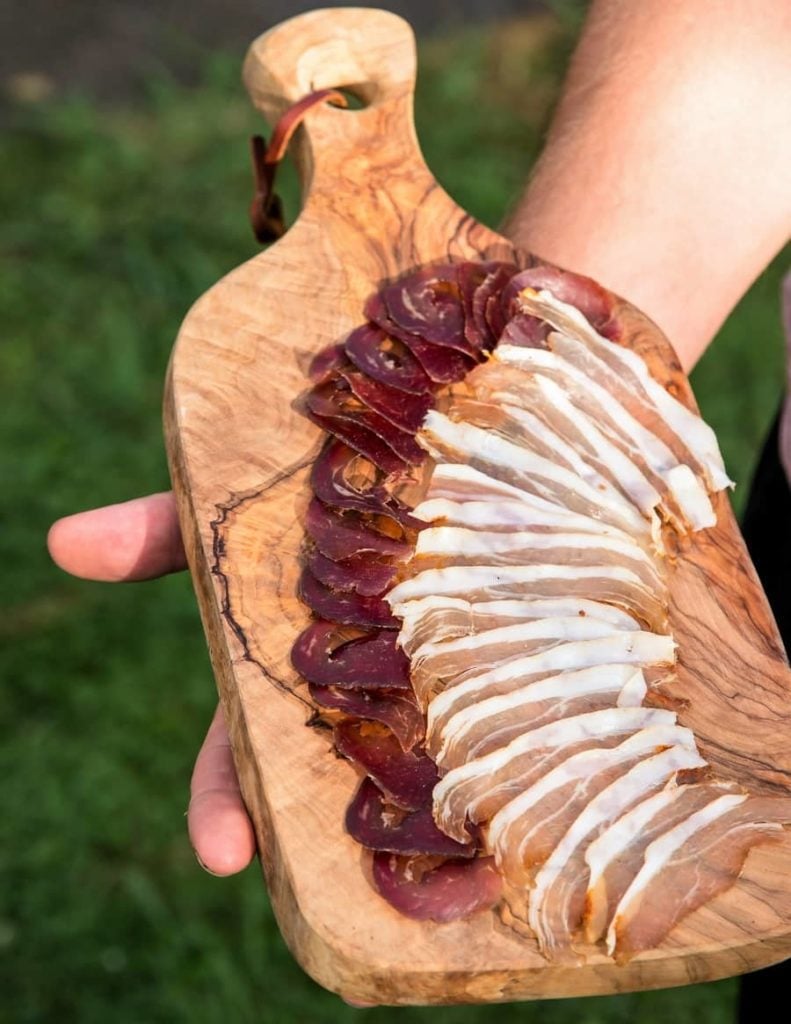
Magic That Comes From Time Honour Dry Curing
The site has a lot about dry curing (applying salt to quality meat and drawing out moisture to intensify and/or preserve the meat).
You might be familiar with dry curing from our friend dry-cured bacon, which is hugely popular.
Or possibly you have heard of prosciutto or Parma Ham. In the most classical interpretation of prosciutto (Parma Ham is prosciutto from the area of Parma with strict name protection and production rules).
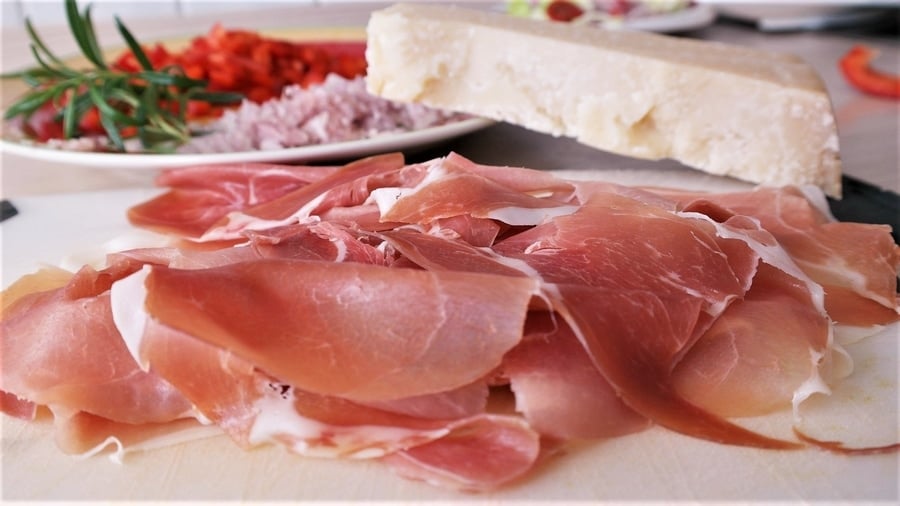
Prosciutto comprises Pork, Salt, 12 months minimum curing/drying & passion.
Prosciutto is one of the finest examples of simplicity and slow food in action. I have read about how prosciutto was around during the Roman Empire. It came about due to necessity since there wasn’t any form of refrigeration.
Charcuterie has been demystified since so much more information has been shared about meat curing, including how to make it and what it actually is.
This evolution has likely made charcuterie popular and morphed its meaning into something marketable and, of course, tasty.
Since the platter of charcuterie is often shared amongst friends and family. It is a communal style of eating, where you also get to customize and choose what and how you eat it, often on a charcuterie board.
Since individuality is such a driving force of Western culture, charcuterie and charcuterie boards fit into this natural evolution surrounding the charcuterie movement.
Home Made, Artisanal & Commerical
As mentioned more information is available now for someone to try and make charcuterie. Through trial and error, I have made successful dry-cured meat in my regular kitchen fridge. Below is how it came out.
Using some inspiration from spices from different cultures (like Chorizo flavors for a chunk of pork) – I had some excellent outcomes from this batch.
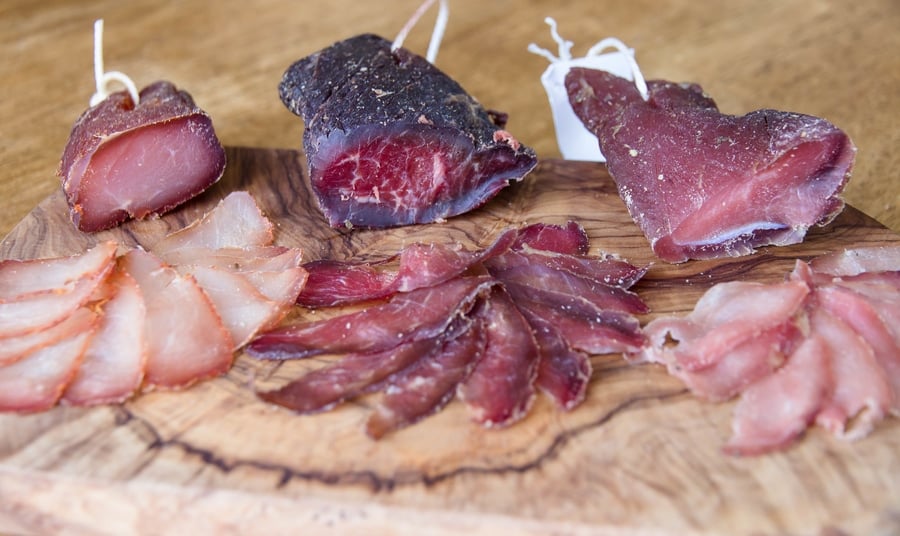
If you want some info on dry cured meat, check out what I wrote explaining various dry-cured meats like ham, salamis, etc. here.
Restaurant Marketing Making Charcuterie Popular
The meat and cheese platter (1980s) used to be the most popular, followed by the antipasti platter (which has been around for a long time in Italy). Recently, the charcuterie platter has made its way onto the scene. Of course, it has a lot of history in France before it’s worldwide appeal.
Charcuterie sounds much more appetizing (and marketable) than a meat & cheese board!
Get asked often about what goes on a charcuterie board or platter, I have written some other posts in detail about this, but will give a bit of an overview.
Here is a brainstorming post about my interpretation of the charcuterie platter “theory” – please find it here.
Classic Popular Charcuterie for a Platter
Prosciutto or Parma Ham would be the classics for me—so simple and so tasty. Quality prosciutto takes 12 months to make and is a true craft.
Dry Cured Meat
Most of these are the classic Italian antipasti dry-cured meats. However, you can also see many charcuterie boards with show-stopper cured meats like Iberian ham, Country Ham, or Mortadella (Emulsified meat; I prefer the kind embedded with pistachios and truffles).
Here is a deli photo from Italy. The assistant comes out and hand slices the wafer thin with a 10-inch brisket/ham knife. I can’t compare it with luncheon spam ham by any stretch of the imagination.
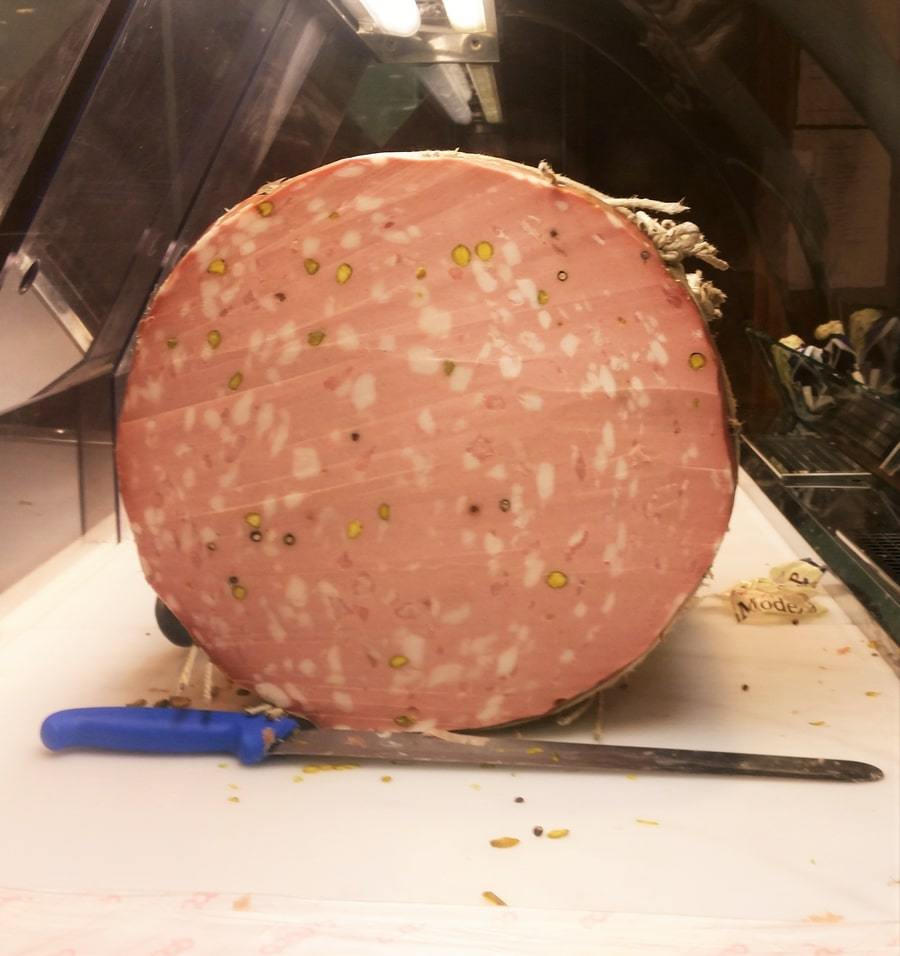
Salamis is another alternative. Classics are probably the most relevant ones for the main fare of charcuterie boards. However, they are also the most involved in making them!
Olive oil and decent balsamic vinegar make an acidic and savory dunk for a nice bread that can be amazing.
When traveling through the classic cured meat area of Umbria, Italy, preserved antipasti vegetables, like this one below, were a common addition.
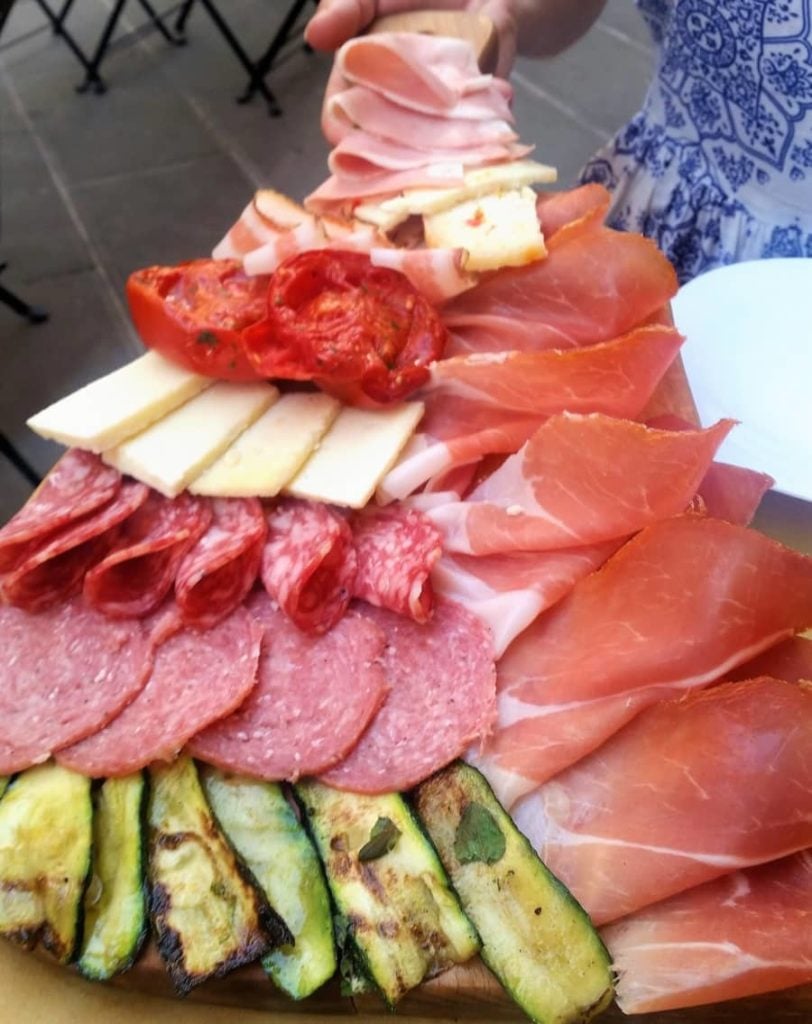
Quick & Easy Charcuterie
If you want to try making some dry cured meats at home, as mentioned I have written a bit of a guide, check it out here. You can produce dry cured meats in 2-3 weeks that will blow your socks off.
It allows some intensifying of flavor. Developing the ‘funky’ flavor of classic dry-cured meats is more about getting into months of dry curing.
Meat Only or Are There More Charcuterie Options?
Spreads and dips are great examples of the expansion of contemporary charcuterie – beetroot, capsicum, tomato, hummus, or pesto – the modern interpretation can include any charcuterie additions in my book.
Charcuterie You Can Make at Home
Here are some of my favorites, which are also charcuterie flavor bombs!
- Hot Smoked Fish fillets
- Pickled Cucumbers
- Quick Dukkah
To get you started, here are some relevant other articles I have written:
Different Methods to Cure Meat with Salt
How to Hot Smoke Fish (How to & Techniques)
I would love to hear your thoughts. I think charcuterie deserves some popularity because it’s about food that has a story, and gaining inspiration from local meat and other ingredients is good for all.
The evolution and morphing of charcuterie (charcuterie cured meats are expensive, here I wrote why) and dry cured meats has, of course, happened in America. Many smokehouses begin for low and slow-smoked meats, country ham, or other dry-cured muscles. Began with Italian, Czech, and German immigrants (plus many other European cultures).
Here is an excellent quote from a restaurant owner in the South of America that specializes in cured charcuterie meat:
Brock still believes that charcuterie should reflect the ingredients in the area where it is made. “You need to showcase the animal breeds and farmers from your region,” he says. “It’s important to glorify your food sources and create a product that demonstrates simplicity and individuality in that it can only be made there.”
Food Republic – How the South Became a Charcuterie Capital
Charcuterie has become rather popular throughout the world, but who invented it?
Traditionally composed of assorted meats and cheeses with modern twists incorporating everything from bread and fruits to dessert boards, charcuterie has undoubtedly transformed over time.
Even over the years of writing this blog about charcuterie, salumi, and cured meats, I’ve noticed how people interpret charcuterie.
The answer depends on your definition of charcuterie. Recently, the word charcuterie has become morphed in America to represent all types of platters, including dessert-based offerings and entire grazing charcuterie tables for functions and weddings.
A French purist would not include these additions as a definition of charcuterie.
History of Charcuterie
But, with all the different varieties, you might be curious about the historical roots.
Who invented Charcuterie? In the 15th Century, the French created charcuterie, which involved using offal and all aspects of the meat. The traditional process of using salt to cure meats dates back to the Roman empire nearly 2,000 years ago, like for salumi such as prosciutto.
We can go back thousands of years more to see more rudimentary and unrefined versions of cured meats. Salt pork and salted meats were a form of survival, as opposed to the refinement of the Roman Empire and more recently.
Interestingly, this traditional practice has been modernized today —particularly in the United States—as different types of charcuterie become more popular in homes and on fine-dining menus.
Knowing the history behind charcuterie can help you appreciate it even more, and you can be quick to notice what constitutes traditional charcuterie and what is a more modern twist.
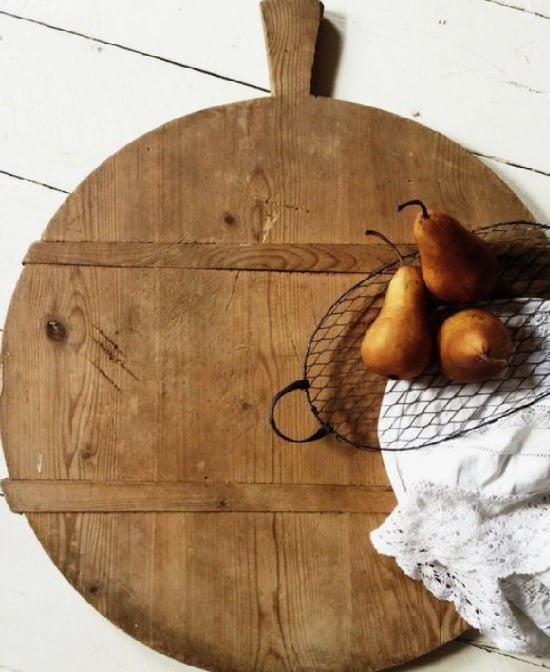
Charcuterie is a French derivative meaning, literally, cooked flesh, and referring to the practice of using all parts of an animal for possible consumption (sometimes not cooked through).
Branch of cooking devoted to prepared meat products
Charcuterie – Wikipedia
This includes the animal’s organs and its more traditional sources of meat like the hindquarters and underbelly.
This practice developed from the desire not to waste a single portion of the animal.
Instead of using only the “good” portions of meat, butchers and cooks could practice the art known as charcuterie.
Instead of just using freshly cut meat, meat began to be processed through grinding, sealing, and salt curing to increase its shelf life and use the animal’s ‘head to tail’.
Various seasonings were added to multiple portions of meat, and different butchers began to use different sources (animals) to practice the art of charcuterie.
Now, you will see charcuterie as cured or cooked meats that are most often thinly sliced, decoratively displayed, and delicately paired with cheese or other options incorporated onto a board or platter.
Traditional Charcuterie

Examples of Historical Traditional French Charcuterie
- Dry Cured Meats
- Salami or Saucisson
- Rillettes
- Mouses
- Pates
Traditional charcuterie, as mentioned above, comes from the French custom of curing meat (history of preserved meat, article I wrote) sometimes and using all portions of the animal to create a long-lasting and unique flavor.
This custom is still popular today, and traditional charcuterie boards are offered at various formal and informal gatherings and on restaurant menus worldwide.
A few distinguishing factors of traditional charcuterie is that it is more heavily focused on the meat. Since the traditional charcuterie refers to the cooked and cured meats, a traditional charcuterie board will follow suit and use these as the highlights of the board.
You can still find assorted cheeses and a few other offerings on a traditional Charcuterie board (ideas and inspirations for a board), but the main focus will be on the delicious, savory meats that have been well prepared and highly sought after.
Modern Charcuterie
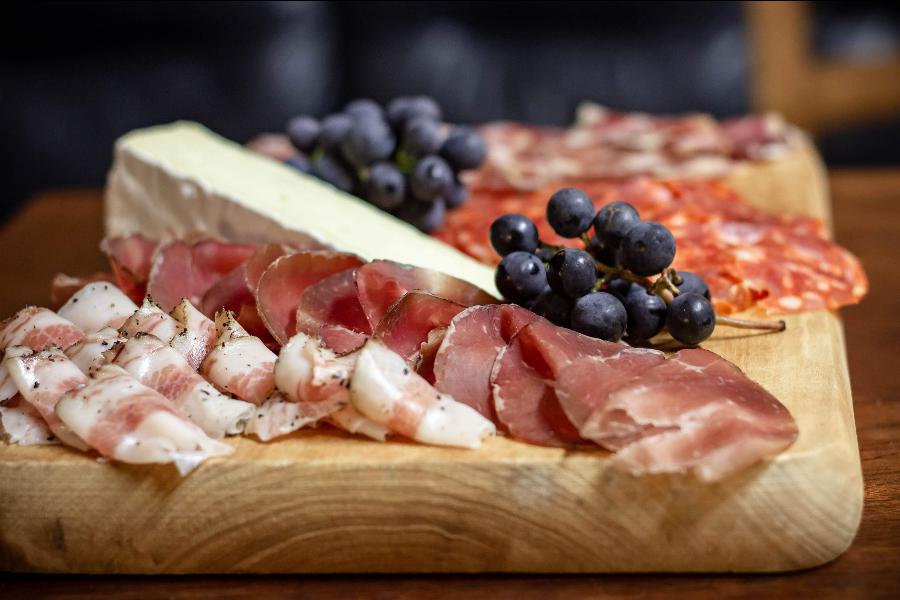
Modern charcuterie boards often include fruits, nuts, jams, spreads, and other assorted snacks in addition to the meat provided.
But, even on a modern charcuterie board, the cooked or cured meat is still considered to be the platter’s central (and most pivotal) portion.
The modern charcuterie board, and all of its twists and variations, is more closely attributed to the practice of making this meat go even further.
Instead of having a protein-heavy board, hosts will use the meat as a central component but pair it with other snacks to help spread out the offering.
This can also help make a more cost-efficient selection as you will likely spend less on cut vegetables or nuts than on delicious meats.
Of course, what you choose to include on a modern charcuterie board should still be considerate of its purpose: to provide you and your guests with something delicious to eat.
Is Charcuterie French or Italian?
As more regions have caught onto the trend of charcuterie as a popular option to serve friends and family, you might have begun to see Italian meats pop up more frequently on the charcuterie board. This might be a bit confusing, as charcuterie is known to be a French custom.
Charcuterie is a custom from 15th-century France in which meat is cured, sealed, and sliced to serve. But now, Italian meats are used in a similar concept called salumi.
Charcuterie is French, but salumi is a similar practice from Italy.
Regardless of the region from which this practice originates, the concept is the same. Cooked or cured meats are thinly sliced, placed on a platter, and served in various ways.
These meats are paired well with other cheeses (and should be paired with a nice glass of wine).
Some people have even gone so far as to take the concept of a charcuterie board and use sweet treats to create items like a “hot chocolate charcuterie board” or a “S’mores charcuterie board”- completely eliminating the meat (the central component of a traditional Charcuterie board) entirely.
If you are wondering about an “Italian charcuterie board”, consider the popular practice of salumi. This differs from the Italian meat and salami, although the two resemble one another in spelling by varying one letter.
Salumi is primarily about the eight major muscle groups that are salt cured in a traditional Italian way.
The whole muscle cuts, one beef cured muscle, and salamis (though the salamis included dried, cooked, and emulsified/cooked like Mortadella)
Regardless of who invented charcuterie, many twists make it a well-loved practice worldwide today. So, whether you are in the mood for a light snack or you plan to make this your whole meal, you cannot go wrong with the traditional or modern version of charcuterie.

Tom Mueller
For decades, immersed in studying, working, learning, and teaching the craft of meat curing, sharing the passion and showcasing the world of charcuterie and smoked meat. Read More
